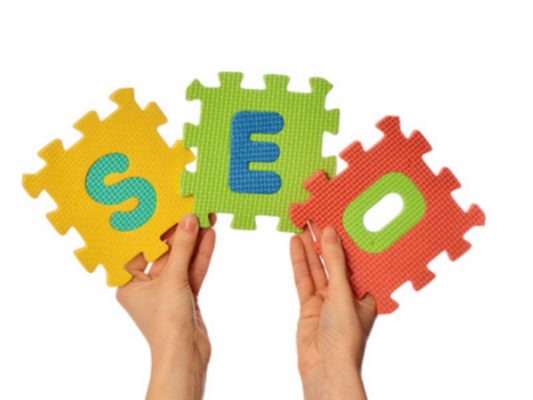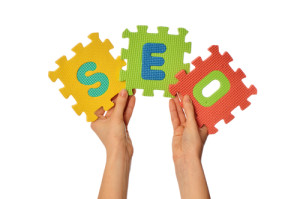

1. Page SpeedHaving a slow loading website can drastically reduce sales and conversions. Additionally, site speed is a ranking signal. Once you learn how to decrease page load time, improve user experience by achieving a load time of 3 seconds or less.
2. Content LengthEvidence suggests that longer blog posts are better for SEO. Several studies have shown that articles with a word count of 1,500 or more generally rank higher in search engine results pages. They get more inbound links, shares, and traffic. Check out the ultimate blogging checklist for other critical points to consider.
3. Content Freshness
Every new post is an indexed page and opportunity to be found. That aside, new information is likely to be more relevant—that’s how Google sees it—and is therefore more likely to show up in search. Updating old content often can boost rankings.
4. Keyword Density
Not that important anymore, but it still matters. Ensuring that keywords are used naturally in content can help pages rank. However, if they appear abundantly, they could attract ‘over optimization’ penalties. Either way, it pays to keep an eye on density.
5. Internal Links
How inner pages are linked affects website architecture, which is important in on-page SEO yet is commonly overlooked. A good internal link structure helps search engines crawl and rank your web pages. It also makes it easier for users to navigate your site.
6. Outbound Links
Sites that link out (with optimized links) to other credible and relevant websites are perceived by Google and users as offering more value. However, too many links could be interpreted as spammy. Also, consider that dofollow links can ‘leak’ PageRank.
7. Title Tag
The tag is a critical factor in search engine optimization. It is also what makes people click through to your site in the SERPs. The ideal title is enticing, includes the target keyword or phrase, and is no longer than 55 characters (including spaces).
8. Heading Tags
Header tags (e.g., H1, H2, and H3 – which ideally contain keywords) matter because they tell search engines (and users) what your content is about. They break up text for readability and form a hierarchy that relays their importance, improving UX and rankings.
9. Alt Image Tag
The alt attribute () provides an alternative description for an image. This is useful in case it doesn’t display correctly or a visitor is visually impaired. Alt tags also affect SEO positively and can attract traffic through image-based search.
10. Image Optimization
Other worthwhile considerations when it comes to images and on-page SEO are file size, file name, and captions. Big files slow down loading times. A file name that includes your target keyword could help you rank. The caption grabs attention and lowers bounce rate.
11. Meta Descriptions
Meta descriptions summarize page content for search engines and surfers. They appear as preview snippets in the results pages. While this information may not help you rank directly, it can affect click-through rates and traffic significantly.
12. URL Structure
Are the permalinks on your website short, descriptive, and hyphenated? Do they include your money keywords? Do they have a sensible category structure? These are important questions to ask if you are serious about ranking your web pages.
13. XML Sitemap
An XML Sitemap lists the pages on a website. Creating and submitting one ensures that search engines know about and index every page. Without one, a new (or re-designed) site can be online for months before its content is found. HTML sitemaps are also useful.
14. Robots.txt File
We use a robots.txt file when we don’t want specific pages on a site indexed, which can be beneficial. However, asking search engines to “disallow” unknowingly (like when you stop paying your SEO and he edits the darn file) can make your site invisible.
15. Duplicate Content
Duplicate content hurts rankings and traffic. Fortunately, there are several ways to solve this on-page SEO problem. Apart from using robots.txt, you can set your preferred domain, use a 301/302 redirect, utilize the rel=”canonical” or rel=”nofollow” tags, and more.
16. Broken Links/404 Errors
Broken links (links that point to non-existent internal pages) and 404 errors tell search engines that your site is neglected, especially if there are a lot of them. This can affect your rankings. It is also a good idea to watch for external broken links.
17. Mobile Optimization
Is you website optimized for smartphones and handheld devices? If it isn’t, you could be losing a lot of traffic and sales. Google seems to favor responsive web design, and it is possible that responsive sites get an advantage in mobile search.
18. Multimedia/Rich Media
Different forms of content (images, video, audio, etc.) can increase user engagement and may suggest to search engines that you have a quality site. However, these types of media can slow down a website, so they should be optimized and kept to a minimum.
19. Reading Level
Google looks at the reading level of pages, which is why one can filter search results by Basic, Intermediate, or Advanced. It is not clear how this info is used, but since they value expertise, pages that fall under intermediate/advanced may get special treatment.
20. Analytics/Webmaster Tools
Google Analytics and Google (and Bing) Webmaster Tools can provide valuable on-page SEO and traffic insights. Some even say that just implementing these programs can influence indexing and rank since they offer access to more data.
21. Uptime
Choose your web hosting provider wisely and definitely don’t skimp; speed and availability are critical – for a number of reasons. The company that hosts your site can hurt your search rankings, sales, and reputation. Server issues and downtime is b-a-d.
22. Important Pages
Search engines prefer sites that are and appear trustworthy. So do users. Having a Contact Us page with a good deal of relevant information (especially if one’s Whois info matches up?) may help establish credibility. Your website should also have a Privacy page.
23. Affiliate Links
Affiliate links are fine, but having a ton of them can raise red flags. It can put you at risk of being deemed a “thin” or “pure” affiliate website, in which case you could lose a lot of ground in the results pages. Here’s what Google has to say on the matter.
24. Domain Expiry
It makes sense that legitimate domains would be paid for several years in advance, doesn’t it? That’s what Google thinks, too. Domain expiry date is likely a low ranking signal. Nevertheless, it can affect traffic, so it should be considered.
25. W3C validation
Poor coding and HTML errors signal that you have a low-quality site, and failing to validate pages based on W3C standards can have an impact on traffic. Despite what you may have heard on this controversial topic, W3C validation remains an on-page SEO best practice.
By : Nelson Dias